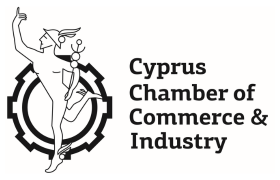In simple terms, unconscious bias means that as an employer you favour one segment of workers over another. The favouritism is considered subtle, as the person exhibiting the prejudice is often unaware the discrimination exists. On the other hand, conscious bias suggests the hiring manager or employer are aware of their deliberate prejudices and overtly hurt another person or a group of people. Regardless of whether it is conscious or unconscious bias, either can have a negative effect on workplace environments. Unconscious racism, ageism, and sexism play a big role in who gets hired. A lot of studies show that many hiring processes are biased and unfair. Left unchecked, these biases can also shape a company or industry’s culture and norms. A simple example would be, if we don’t see male kindergarten teachers or female engineers, we don’t naturally associate men and women with those jobs, and we apply different standards when hiring, promoting, and evaluating job performance.
However, here are six steps you can take to reduce these biases. Where should you start? And how can you help others on your team do the same?
Standardize interviews
As you already know there are three types of interviews structures: structured, semi-structured and unstructured. Research shows that using unstructured interviews increase bias in the hiring process because they lack defined questions and assume that a candidate’s experience and expertise are meant to unfold organically through conversation. They are said to often be unreliable for predicting job success. On the other hand, using structured interviews whereby candidates are asked the same set of defined questions, can help to reduce the bias, and standardizes the interview process by allowing employers to focus on the factors that have a direct impact on performance. Using a scorecard that grades candidates’ responses on a predetermined scale can allow for bias to be mitigated. Ideally, interviewers should not know how well candidates did in terms of CV reviews and work samples, in order for the interview to become a third independent data point, increasing reliability.
Rework job descriptions
When job seekers read the role’s job description, they gain a first impression of a company’s culture. Evidently, even subtle word choice and the tone of voice you use in your job descriptions can have a major impact on the application pool. Choosing words wisely with regards to what adjectives you will use such as “competitive” or “determined” makes a big difference with regards to which demographics you will attract. Words such as “collaborative” and “cooperative” tend to draw in more women, whereas men tend to be attracted to more of the previous mentioned adjectives. Therefore, replacing these words with more neutral ones can help counteract this effect, or even using the same number of gendered descriptions and verbs. Go back and review your job descriptions and see what works best for your company. Learn by doing!
Seek to understand
The topic of bias in the recruitment process is a very prominent topic in today’s HR and recruitment world, suggesting that employers and employees need to be educated and trained to understand the prejudices that exist and become aware of them. Therefore, awareness training is the first step to unravelling unconscious bias, since it allows employees to recognise that everyone possesses prejudices and then try to identify their own. The idea is to generate “organisational conversation” about biases and trigger ideas on steps that the company can take as a whole to mitigate them.
Work sample test
Giving work sample tests mimics the different tasks the candidate will be doing on the job. These are great indicators of future job performance. This type of candidate evaluation also allows for comparisons between candidates, which can help you as the hiring manager decide which applicant fits best to the role in question. Moreover, a skill test also forces employers to critique the quality of a candidate’s work relative to unconsciously judging them based on their appearance and personality or their demographic such as age and gender.
Go blind for the resume review
At this point, you need to level the playing the field by making sure you are focused on the candidates’ specific qualifications and talents, not surface demographic characteristics. Software programs help in these situations as they blind the process for you since the systematic process for reviewing applicants and resumes aids improve the hiring managers chances of including the most relevant candidates in the interview pool and uncovering some hidden gems. Therefore, this type of process needs to be set as a priority in the recruitment process to avoid bias trickling in.
Constitute a multi-functional interview team
A cross-functional interview team is a great method to eliminate prejudice in the hiring process since you gather various other expertise opinions on the same candidate, which also allows for a debriefing session in which other interviewers may verify any biases. As well as this, guiding the interview team on what to look for and avoid, including biases, can also be seen as an excellent strategy.
At GRS we offer a range of HR Solutions to support you in the growth of your organisation. Contact our team of Consultants today to discuss how we can assist in Cyprus, Malta and the Middle East.













